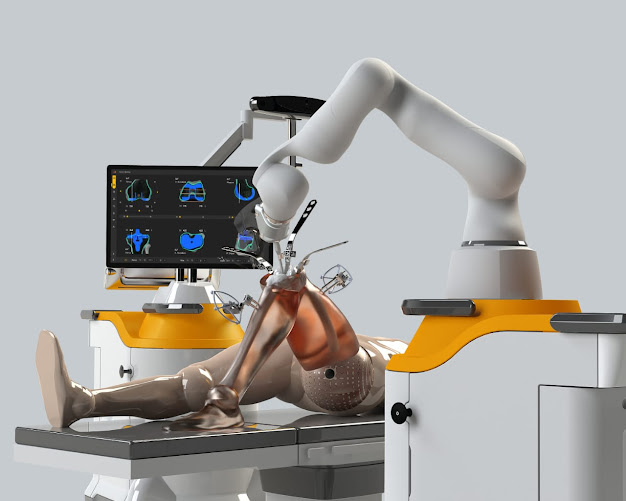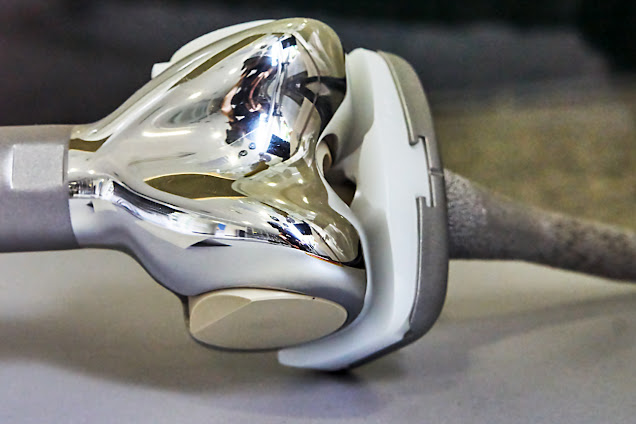The Future of Knee Replacement Technology
In recent years, advancements in knee replacement technology have revolutionized the field of orthopedics. With the aim of providing better patient outcomes and addressing the specific needs of different demographics, researchers and surgeons are constantly exploring new approaches and leveraging cutting-edge technologies. In this article, we will delve into the latest developments in knee replacement technology, including the use of ceramic implants, smart implants, robotic assistance, handheld navigation, and remote patient monitoring. These innovations are poised to enhance the surgical experience, improve accuracy, and facilitate personalized rehabilitation for patients.
The Rise of Ceramic Knee Replacements
One of the most significant breakthroughs in knee replacement technology is the advent of ceramic knee implants. Traditionally, knee replacements involved a plastic tibial component and a metal femoral component made of cobalt chrome alloy. However, these implants typically had a lifespan of 15-20 years, limiting their suitability for younger patients. Recognizing this limitation, researchers have developed ceramic knee replacements that offer a longer life expectancy of 20-25 years.
The ceramic knee implants consist of a plastic tibial component and a metal femoral component with a ceramic surface. This change in material significantly reduces wear and tear compared to traditional implants. The ceramic surface is scratch-resistant, minimizing the development of microscopic scratches that can lead to increased wear. Additionally, the oxidized ceramic surface provides a smoother articulation with the plastic, resulting in reduced wear rates. Moreover, the use of ceramic eliminates the risk of allergic reactions to nickel, making it a safe option for patients with severe nickel allergies.
Embracing Smart Implants for Enhanced Recovery
In recent years, the integration of smart technology into knee implants has opened up new possibilities for monitoring patient progress and optimizing rehabilitation. Smart implants are equipped with sensors and data collection capabilities that allow for real-time tracking of key parameters such as gait speed, step cadence, stride length, range of motion, and step counts. This objective data provides valuable insights into the patient's recovery process and enables a more personalized approach to rehabilitation.
By leveraging smart implants, patients can actively participate in their recovery journey. They can track their progress over time, compare it to their preoperative baseline, and set realistic goals for themselves. This increased engagement and awareness empower patients to take control of their rehabilitation, leading to better outcomes. Additionally, the aggregated and de-identified data collected from smart implants can contribute to a better understanding of postoperative recovery patterns and inform surgeons about expected progress for patients in different demographics.
Revolutionizing Knee Replacement Surgery with Robotics
Robotic assistance has emerged as a game-changer in knee replacement surgery. Robotic systems offer the potential for improved precision, accuracy, and reproducibility, leading to enhanced clinical outcomes. These systems utilize advanced imaging techniques to create a 3D model of the patient's knee, allowing surgeons to plan and execute the procedure with unparalleled precision.
During surgery, robotic systems provide real-time feedback and guidance, enabling surgeons to make precise bone cuts and ensure optimal alignment of the implant components. This level of accuracy helps minimize outliers and performance errors, leading to improved patient satisfaction and long-term success.
Although the adoption of robotic systems in ambulatory surgery centers (ASCs) is still limited due to cost considerations and space constraints, the technology continues to evolve rapidly. Ongoing research and retrospective studies have demonstrated the potential of robotics in improving surgical outcomes, particularly in terms of joint alignment and component positioning. With further advancements and cost reductions, robotic assistance is expected to become the standard of care in the future.
Enhancing Surgical Accuracy with Handheld Navigation
For ASCs looking for a cost-effective alternative to robotics, handheld navigation devices offer a practical solution. These devices assist surgeons in improving the accuracy of implant alignment without the need for bulky and expensive computer navigation systems. Handheld navigation devices provide real-time feedback and guidance during the surgery, ensuring precise bone cuts and optimal implant positioning.
These devices are particularly beneficial for low-volume surgeons who perform a moderate number of knee replacements each year. Studies have shown that handheld navigation technologies help reduce outliers and performance errors, leading to improved clinical outcomes. With their affordability and ease of use, handheld navigation devices have found a place in many ambulatory settings, enabling surgeons to achieve greater accuracy and patient satisfaction.
Empowering Patients with Remote Monitoring
Remote patient monitoring has gained momentum as a valuable tool for improving patient care and enhancing postoperative recovery. Through the use of smartwatches or smartphones, providers can deliver continuous information to patients, enabling them to track their progress and provide direct feedback. This two-way communication fosters greater patient engagement and allows for personalized care throughout the entire recovery process.
Remote monitoring technology facilitates seamless communication between patients and healthcare providers, enabling timely intervention and support. Patients can receive personalized instructions, reminders, and educational materials to aid in their recovery. The constant connection and personalized approach contribute to better patient outcomes and overall satisfaction.
While the benefits of remote monitoring are evident, reimbursement levels for these services can be a challenge for ASCs operating under bundled payment systems. Striking a balance between cost-effectiveness and high-value care remains crucial for the widespread adoption of remote monitoring technology in knee replacement surgery.
The Future of Knee Replacement Technology
As knee replacement technology continues to advance, patients can look forward to even better outcomes and experiences. The integration of ceramic implants, smart implants, robotic assistance, handheld navigation, and remote patient monitoring has the potential to transform the field of orthopedics and revolutionize knee replacement surgery.
In the coming years, we can expect further refinements and improvements in these technologies. Research and clinical studies will continue to validate their efficacy, ensuring their acceptance and integration into routine practice. As costs decrease and evidence accumulates, the barriers to adoption in ASCs will diminish, making these technologies more accessible to a wider range of patients.
Ultimately, the future of knee replacement technology is focused on enhancing patient outcomes, improving surgical precision, and enabling personalized care. With each innovation, we take a step closer to achieving optimal results and empowering patients to regain their mobility and quality of life.
As we look ahead, it is important to acknowledge the valuable contributions of researchers, surgeons, and technology developers who are tirelessly working towards advancements in knee replacement technology. Their dedication and commitment ensure that patients receive the best possible care and enjoy the benefits of these groundbreaking innovations.
In conclusion, the future of knee replacement technology is bright, promising a new era of improved patient outcomes, enhanced surgical precision, and personalized rehabilitation. With each innovation, we move closer to achieving the perfect balance between science, technology, and compassionate care. Embracing these advancements, we can pave the way for a future where knee replacement surgery becomes even more effective, efficient, and patient-centered.



.jpeg)